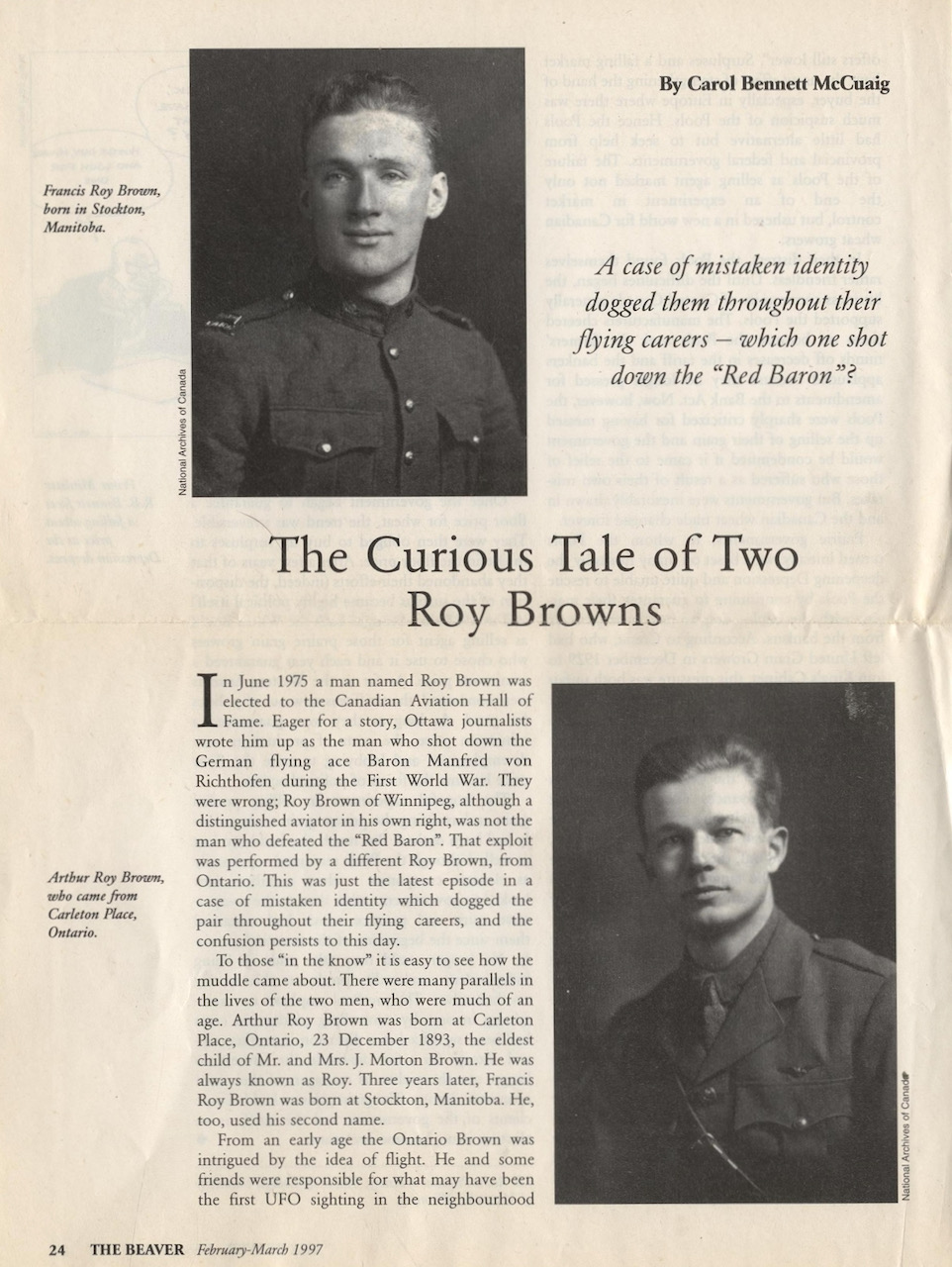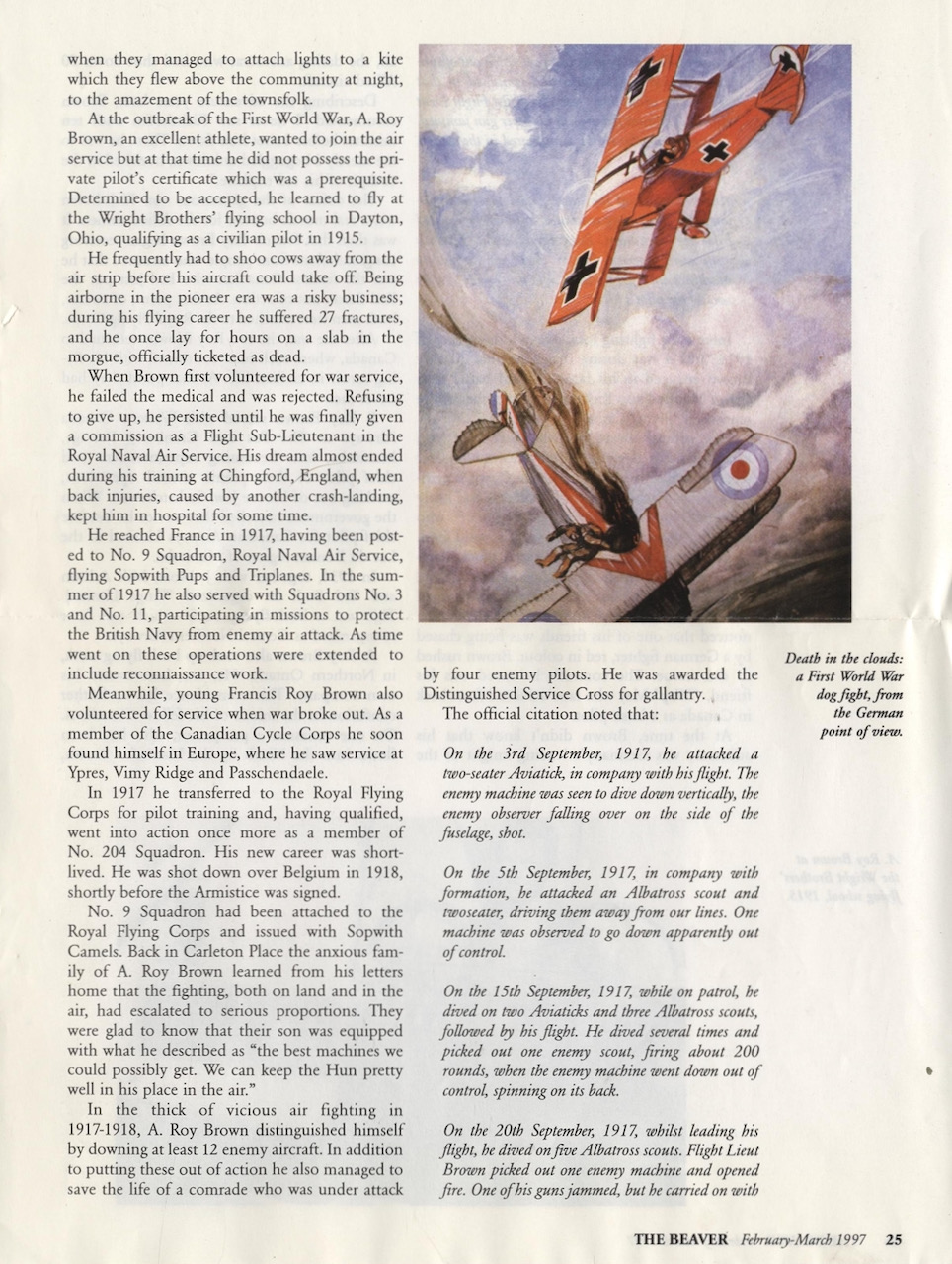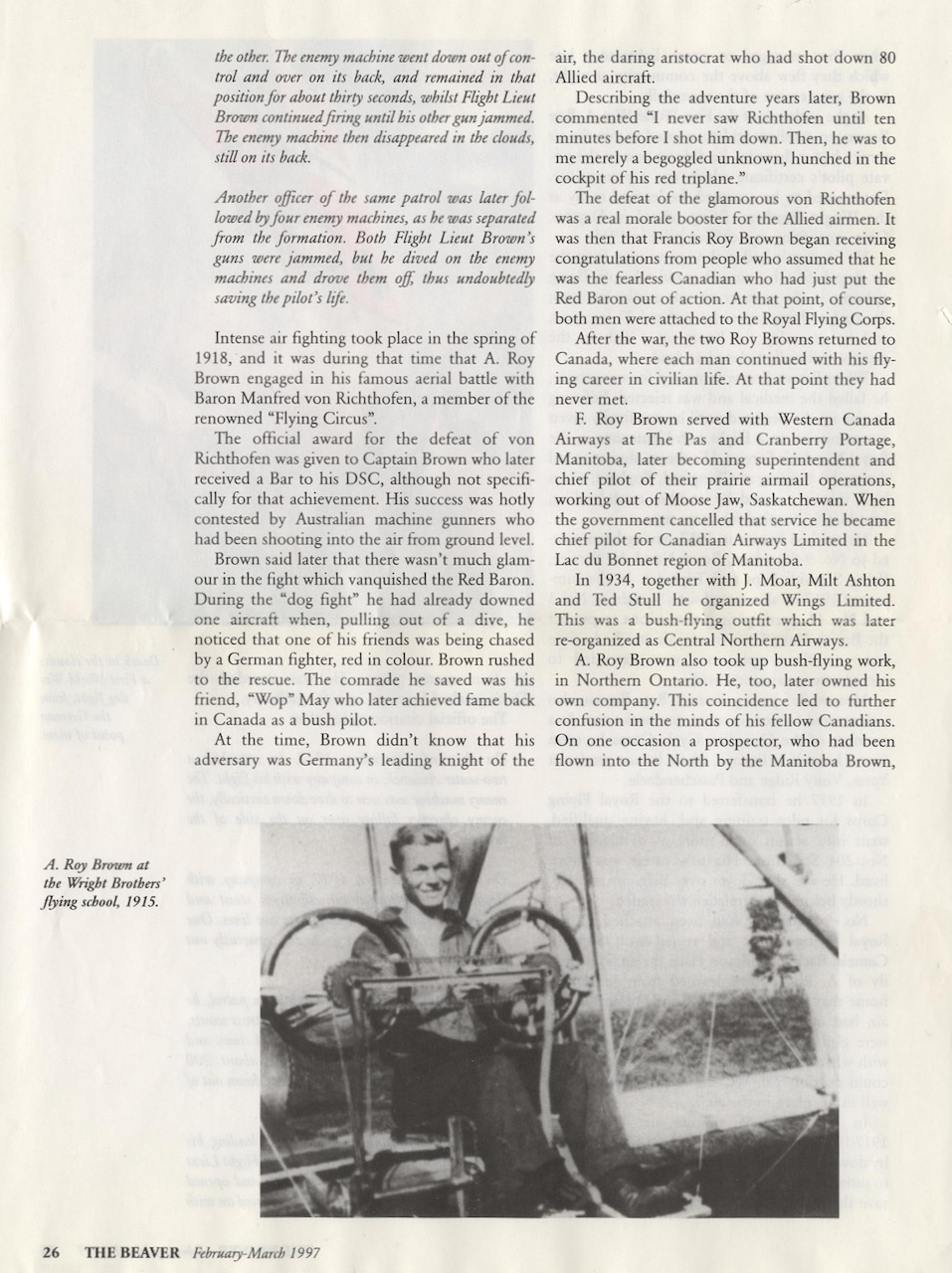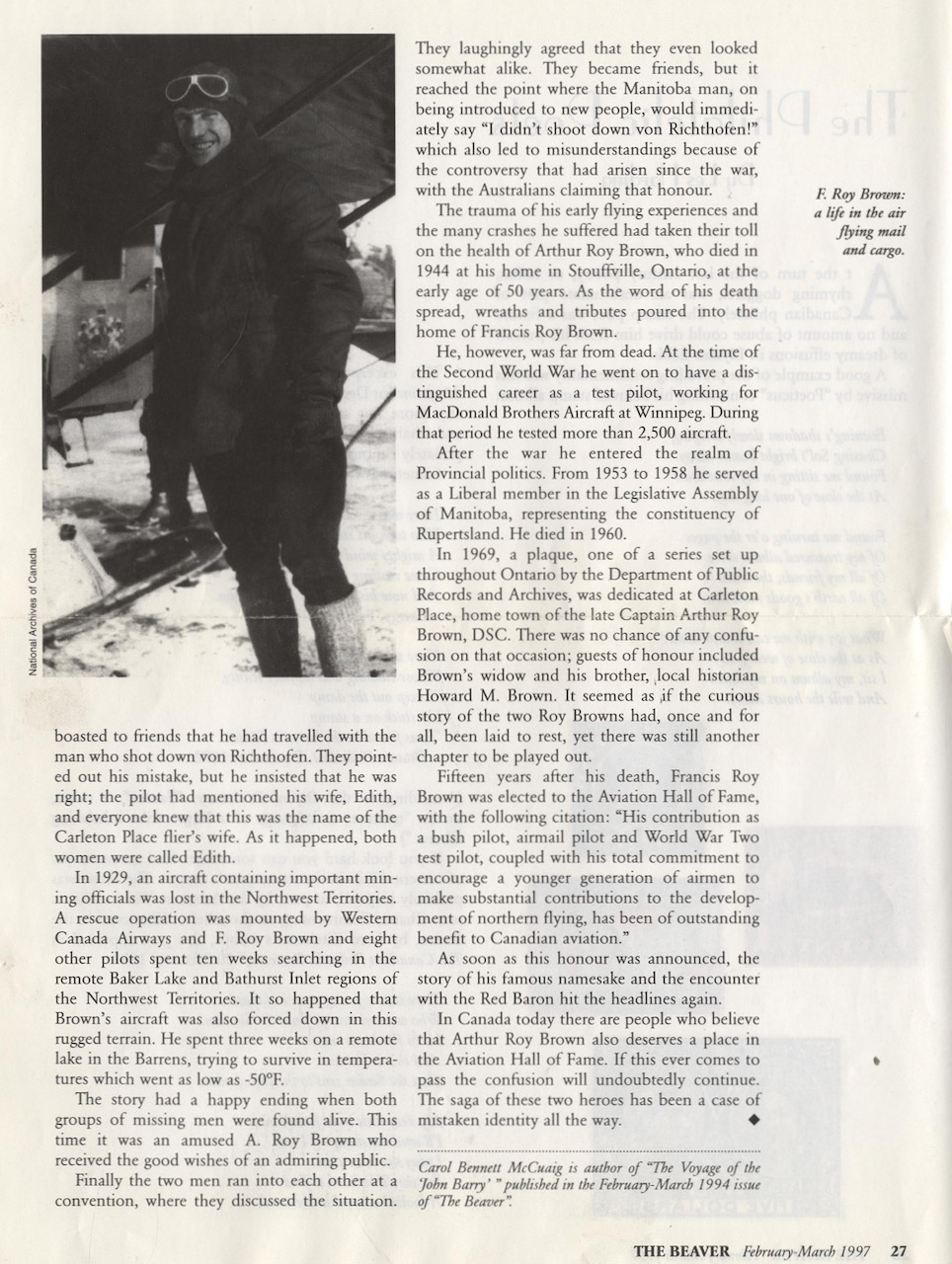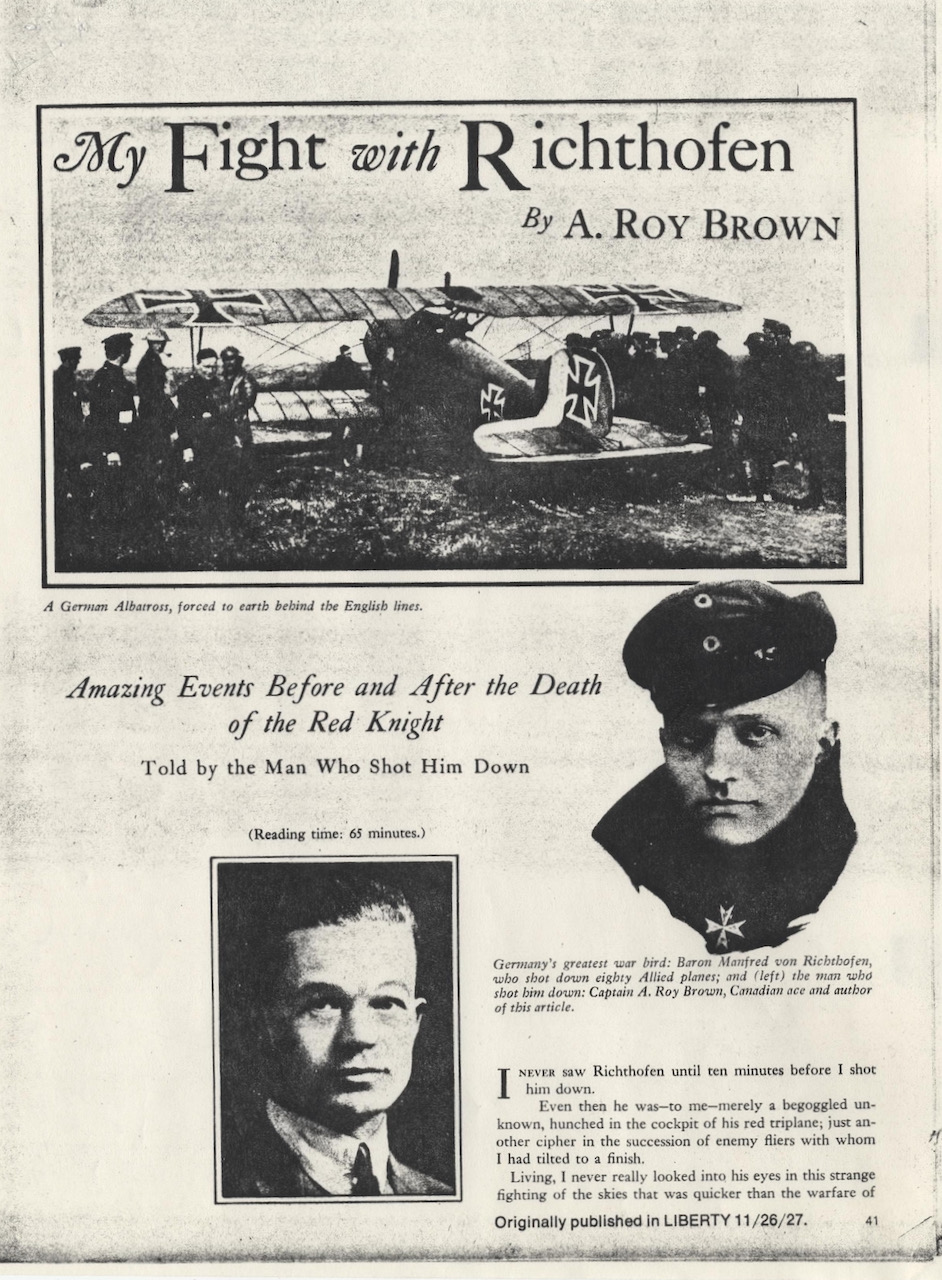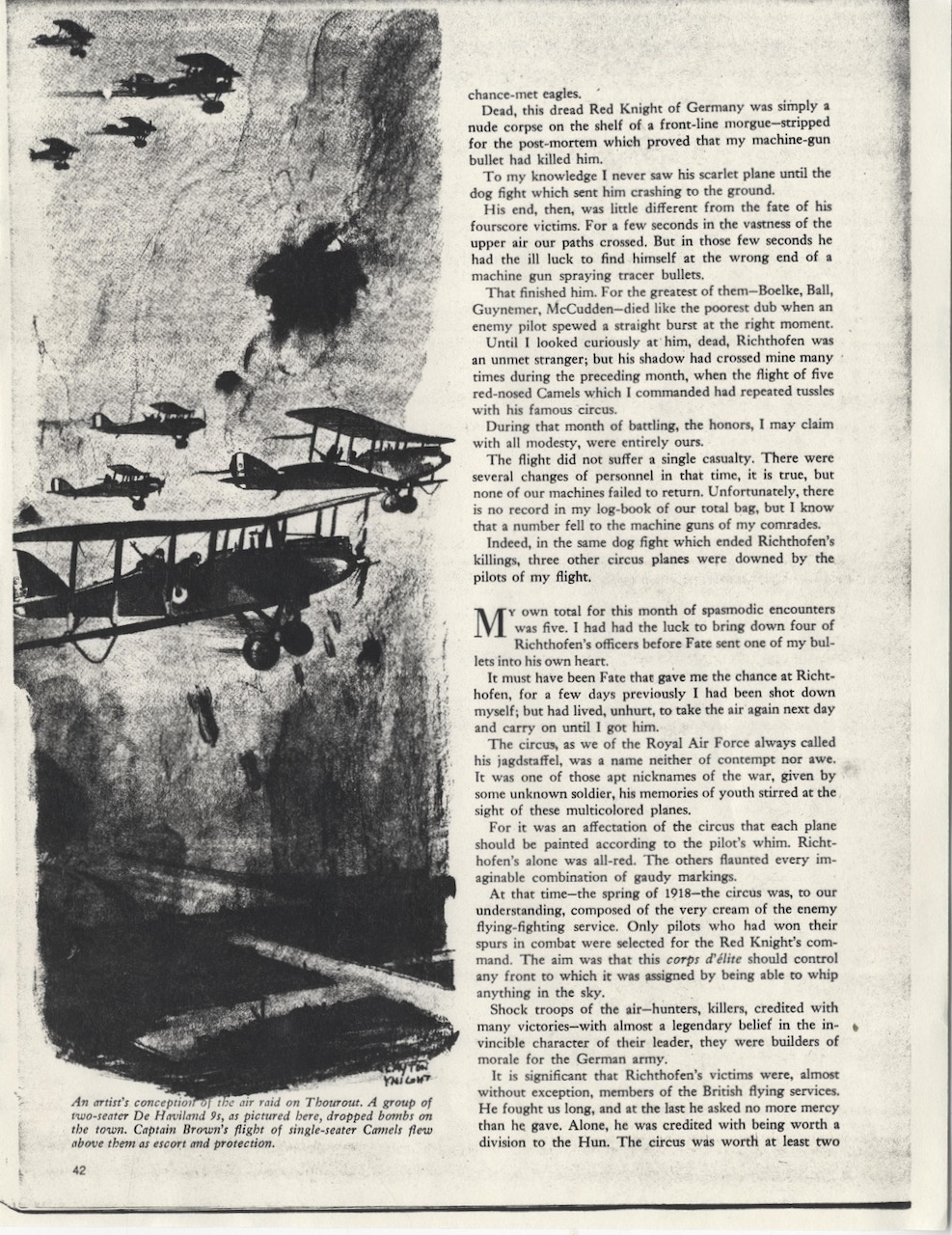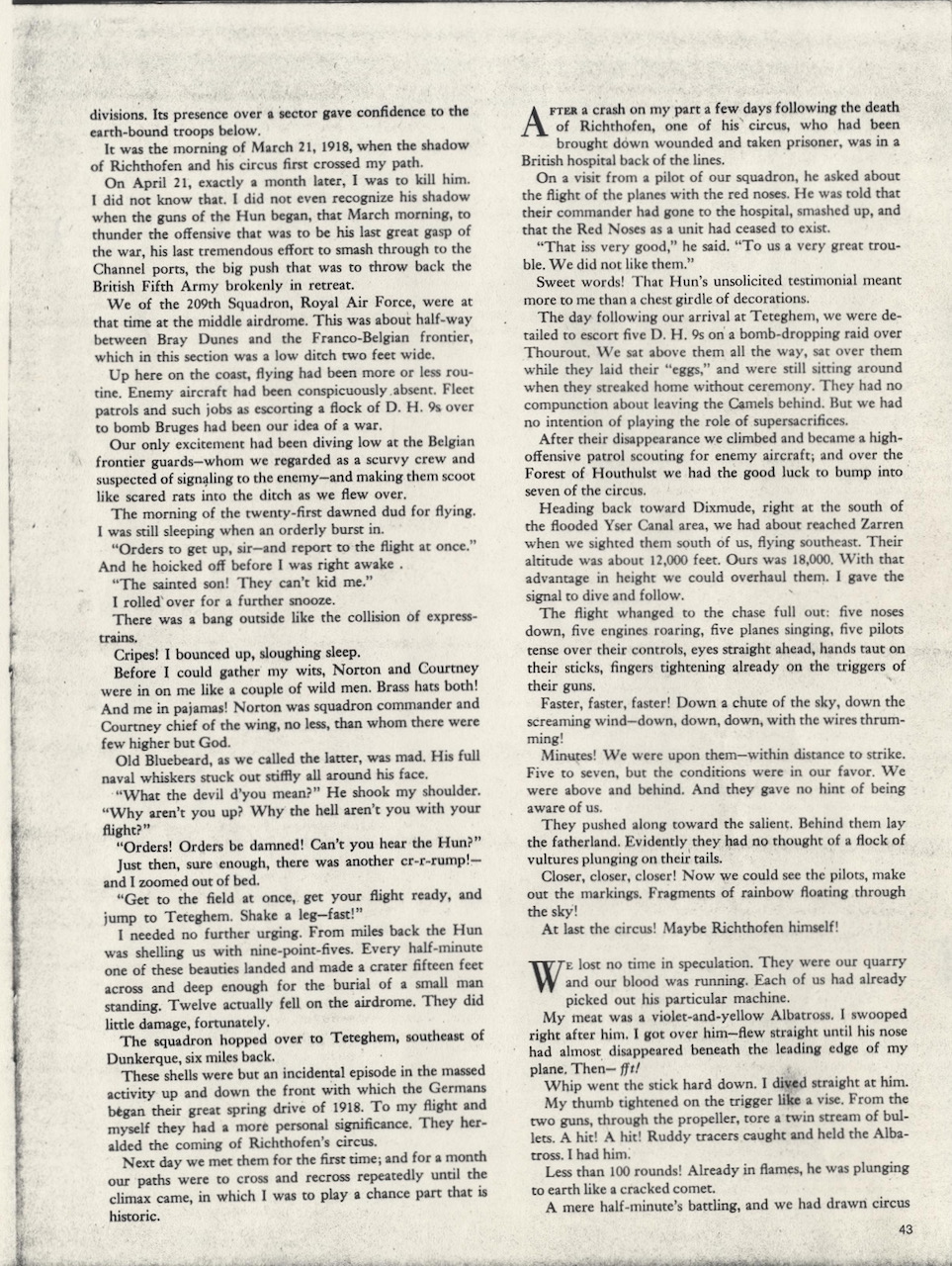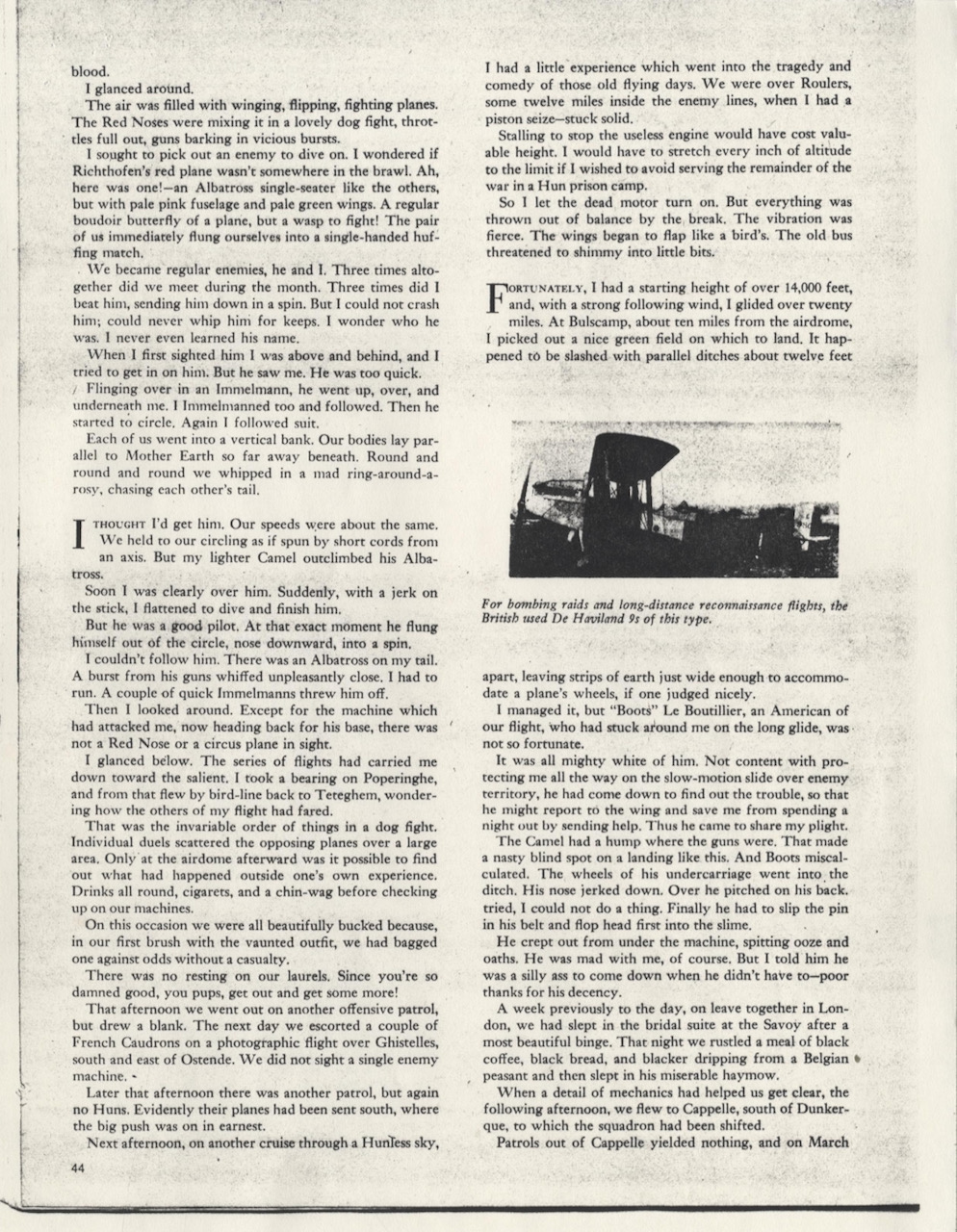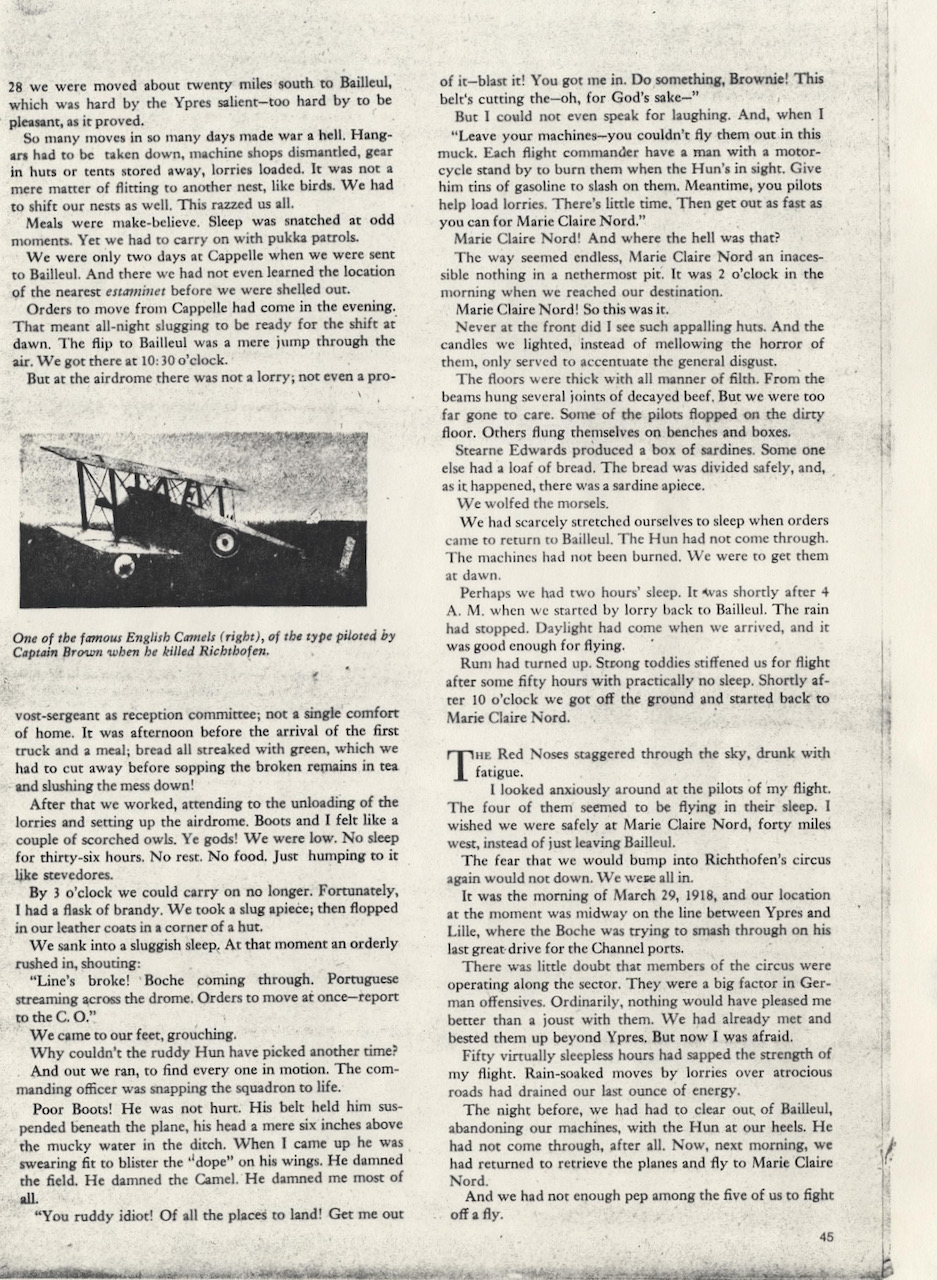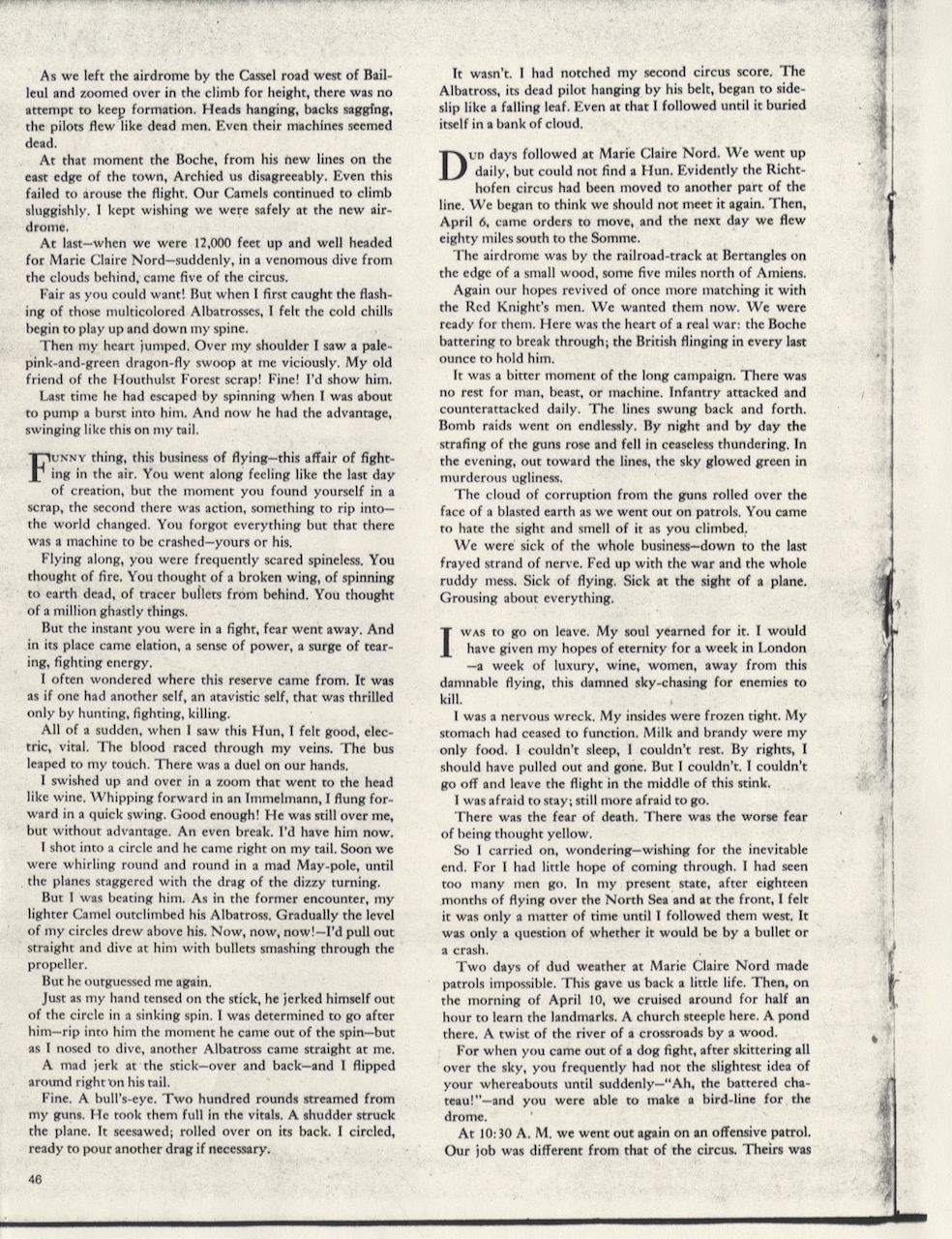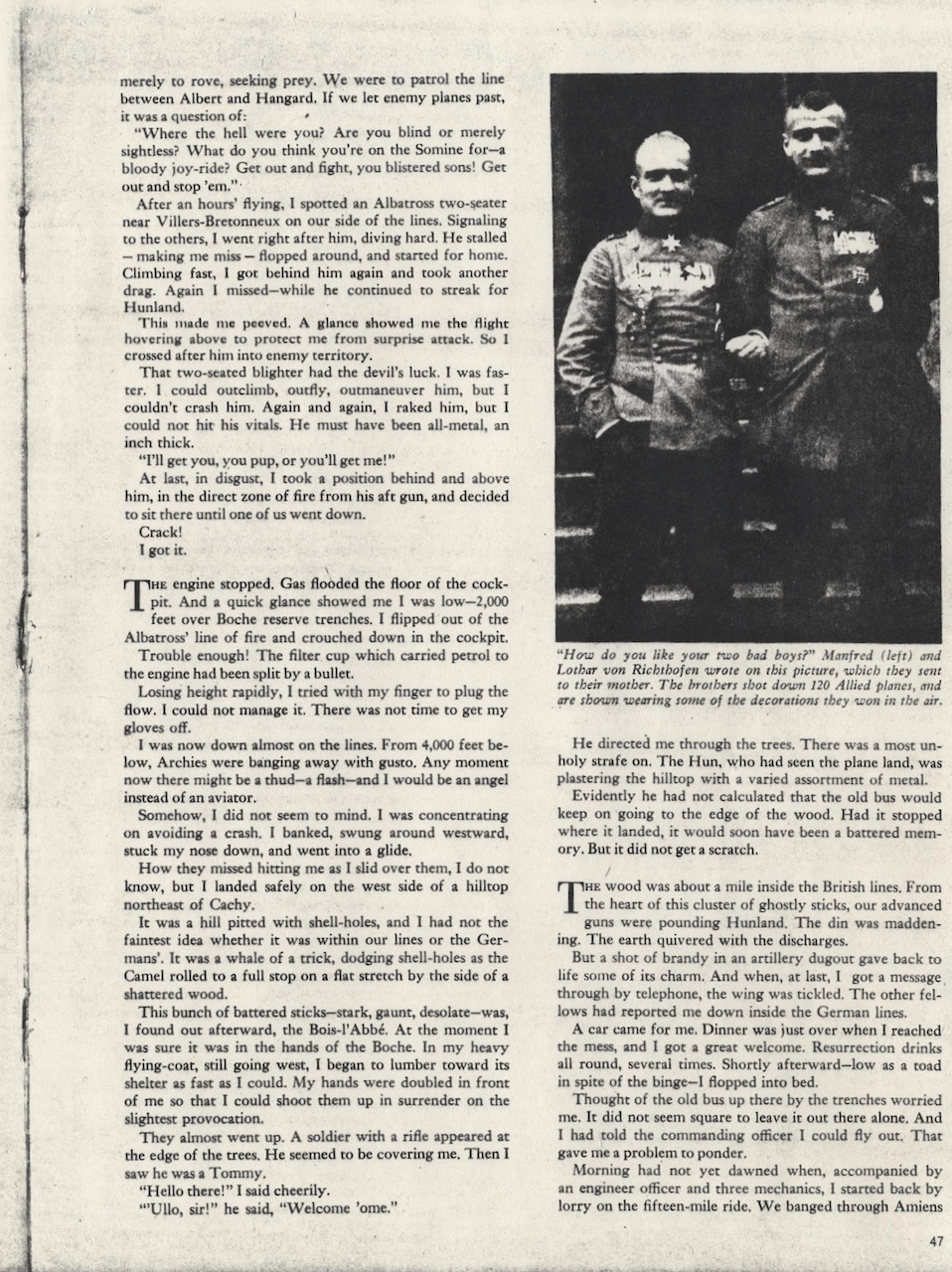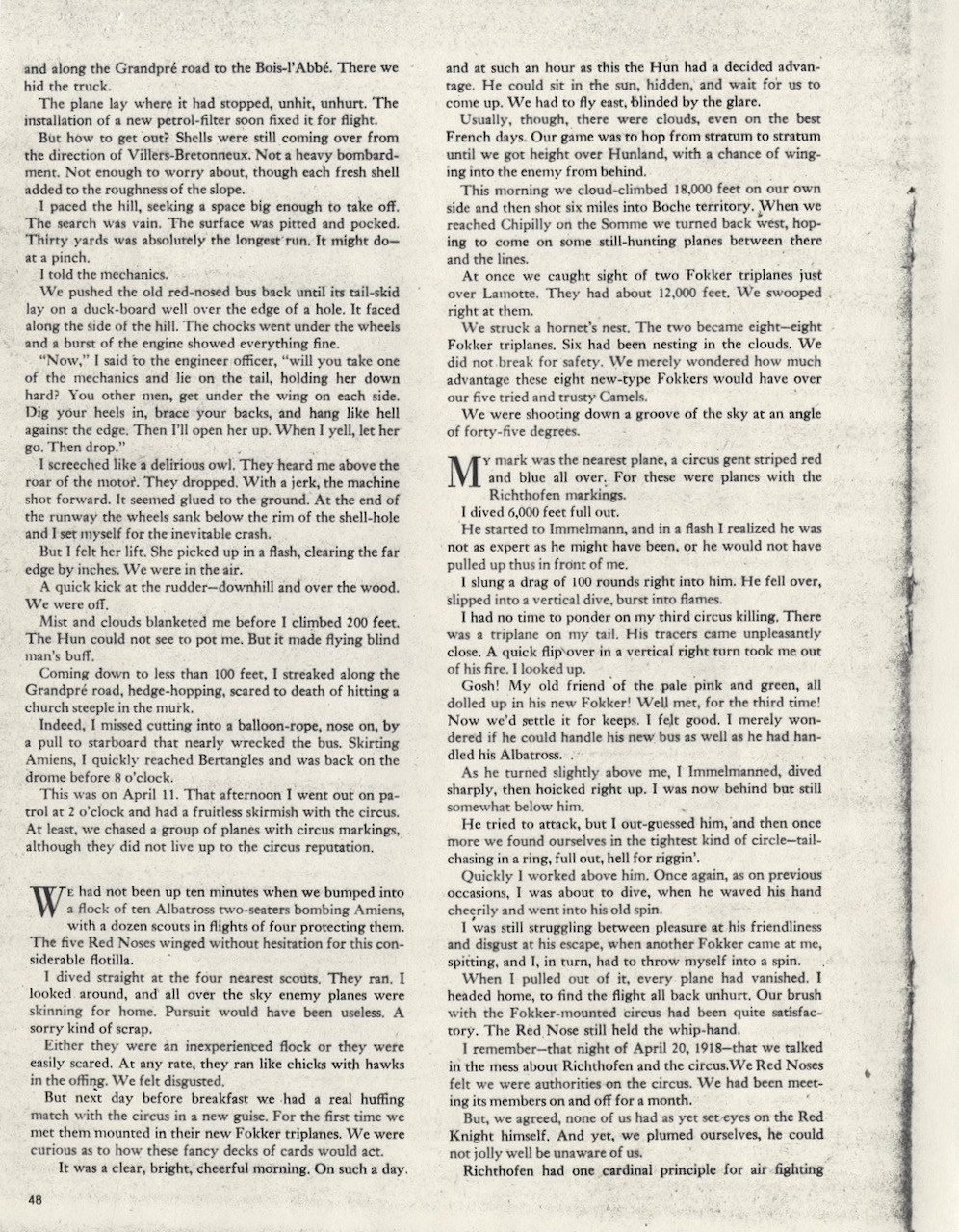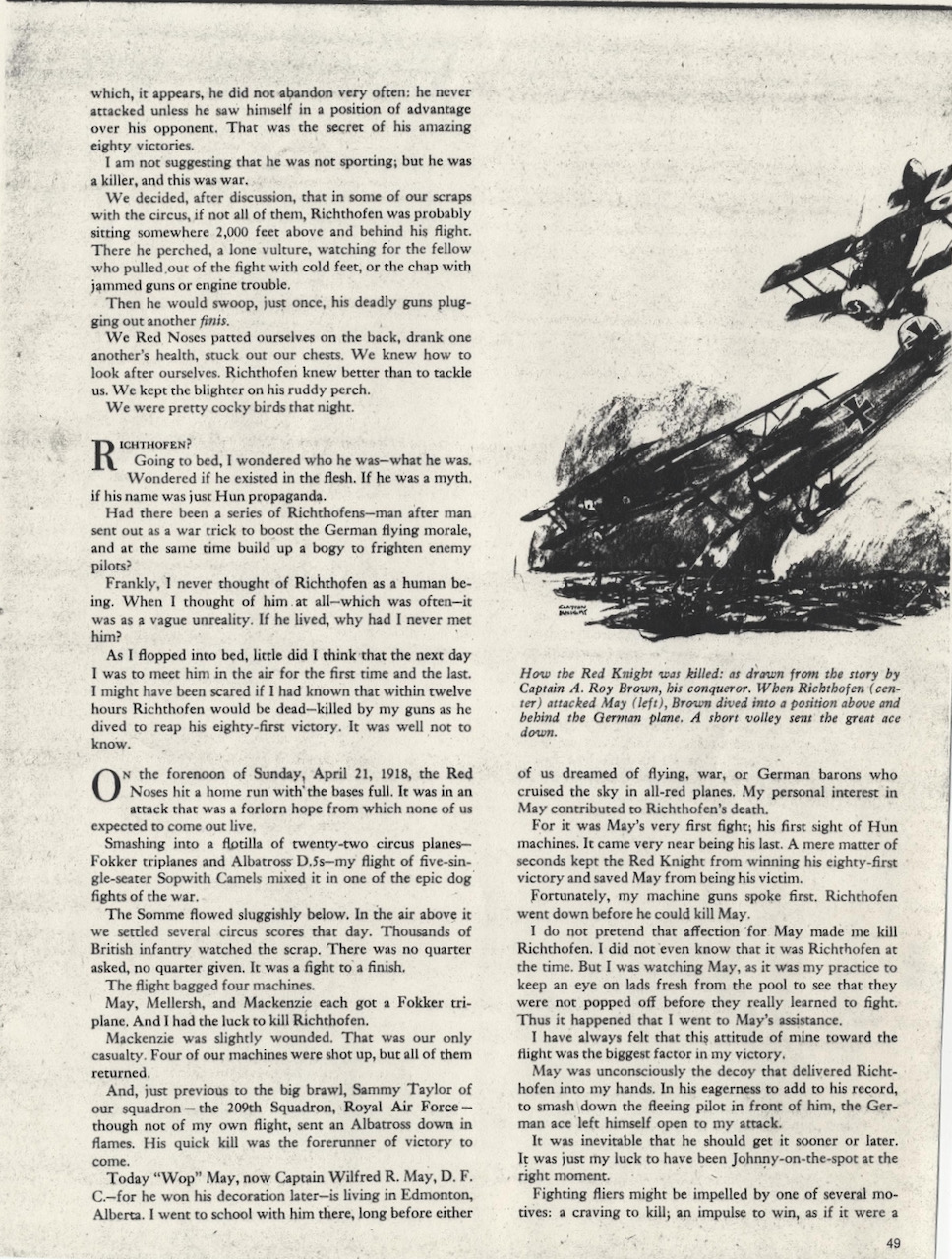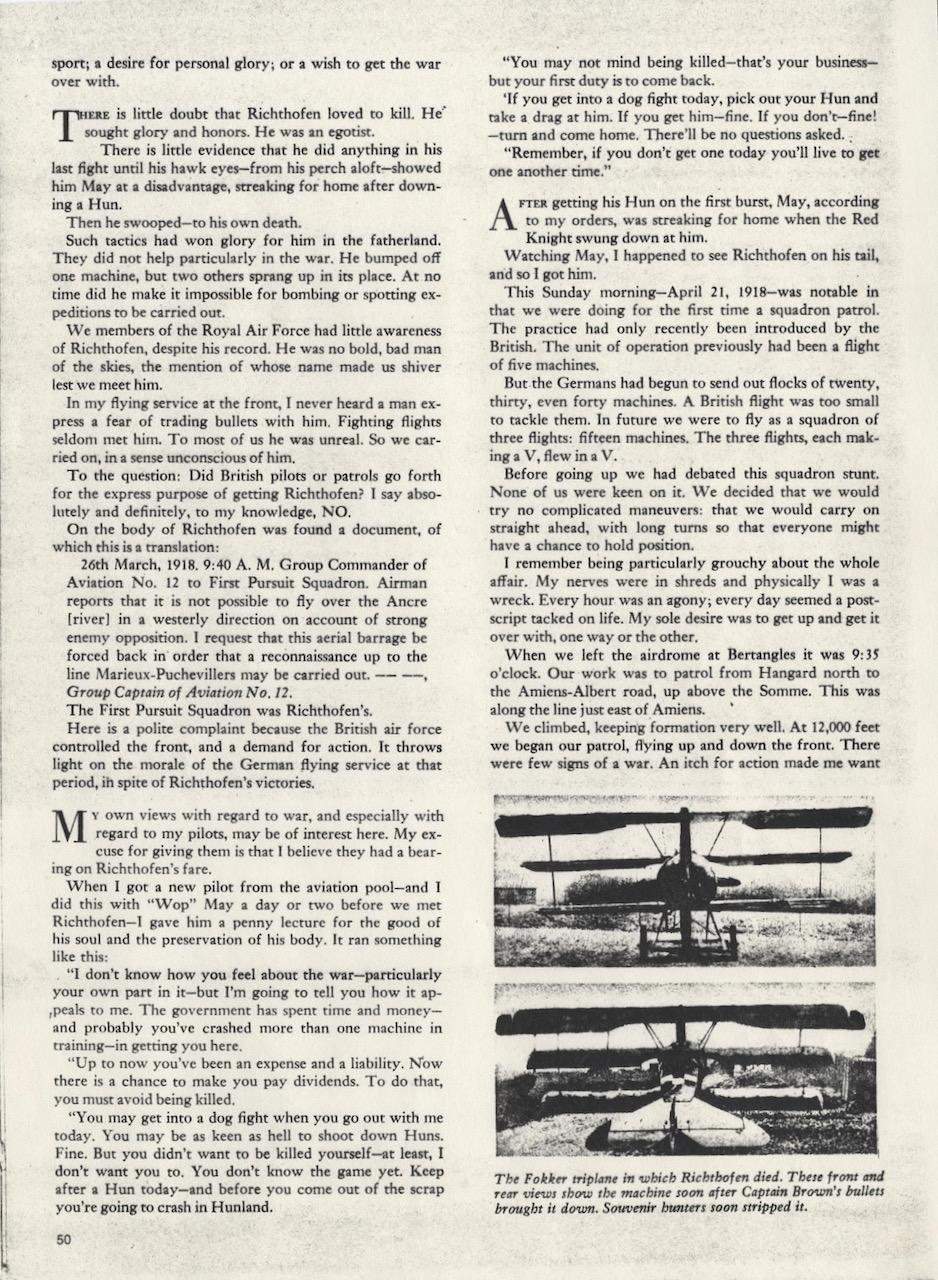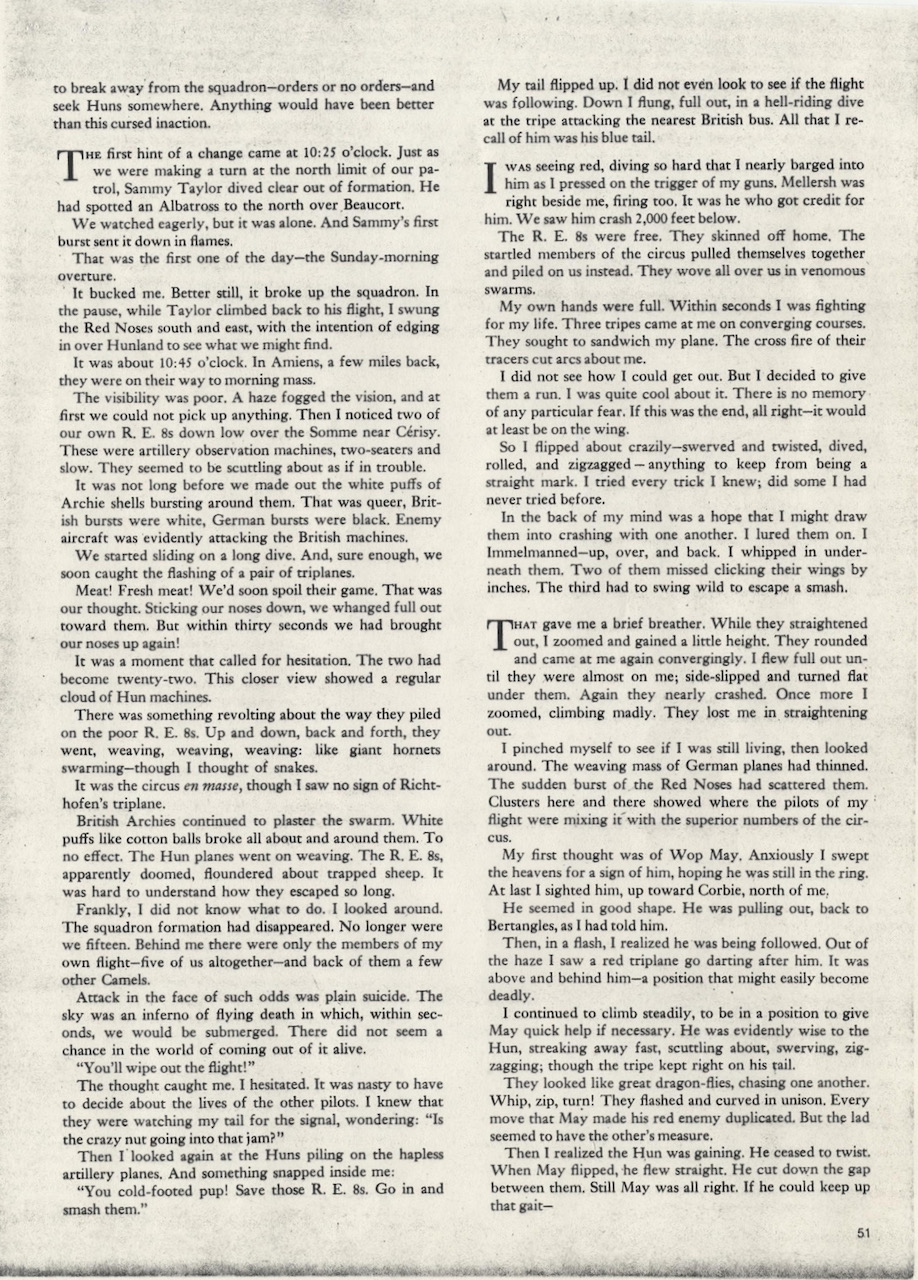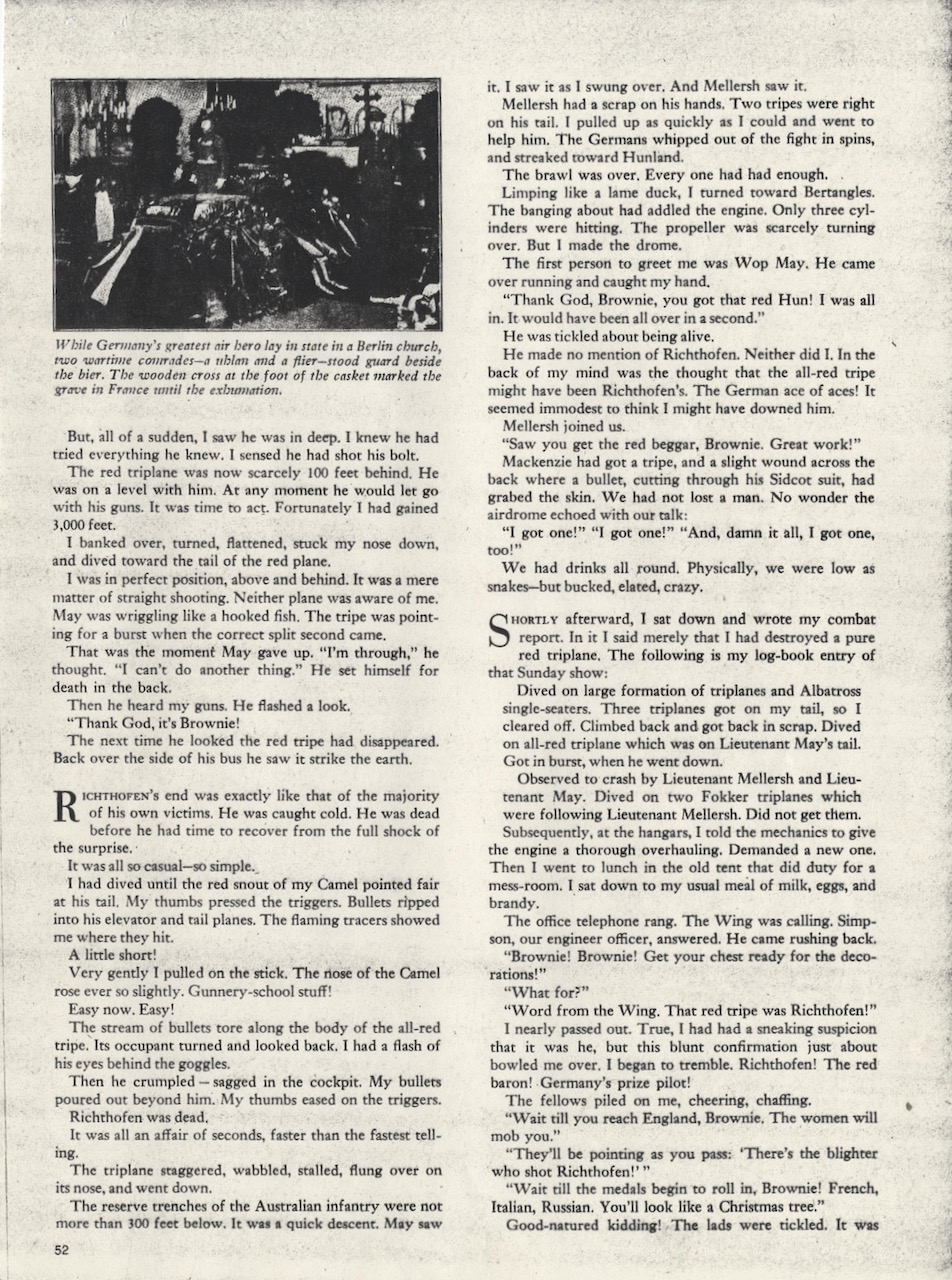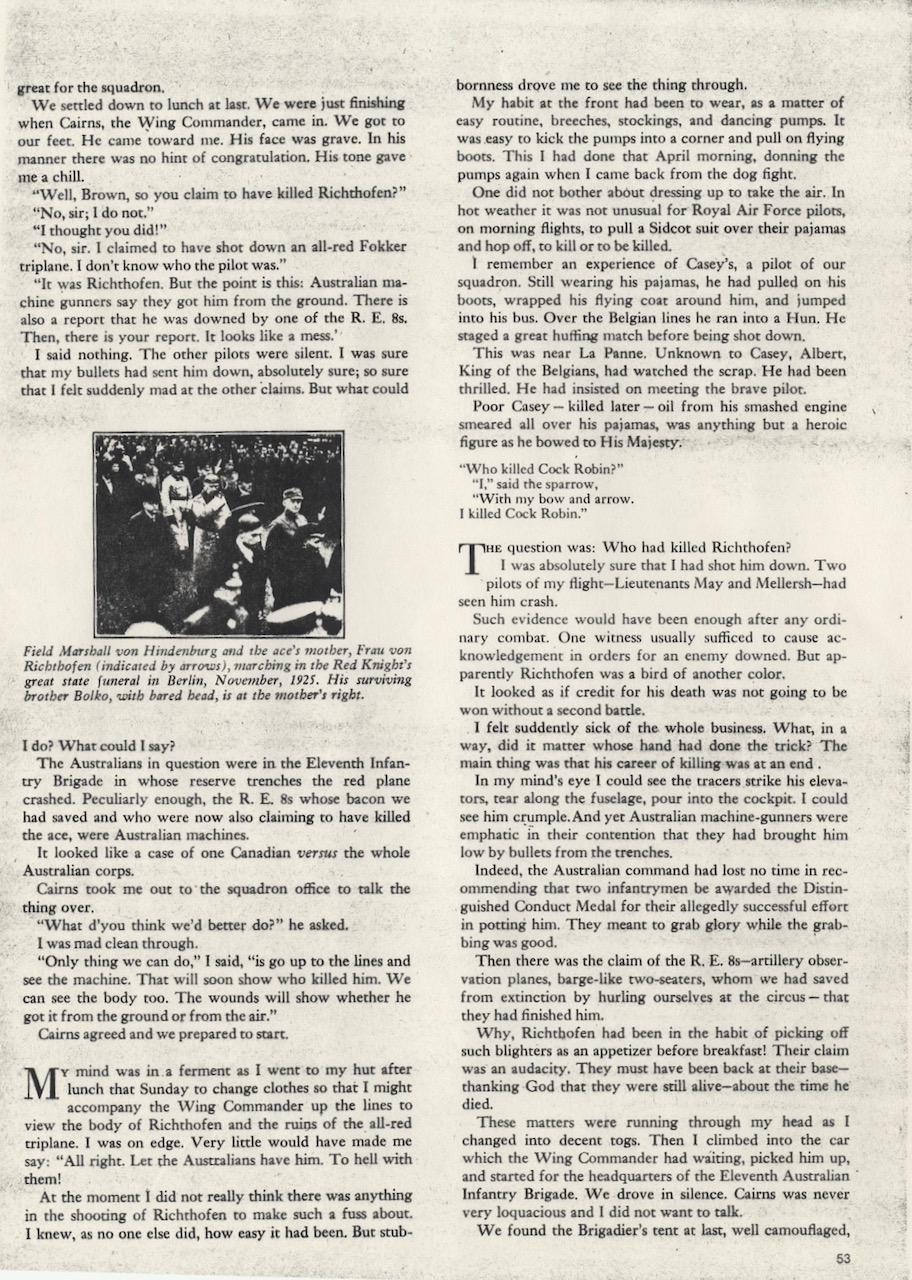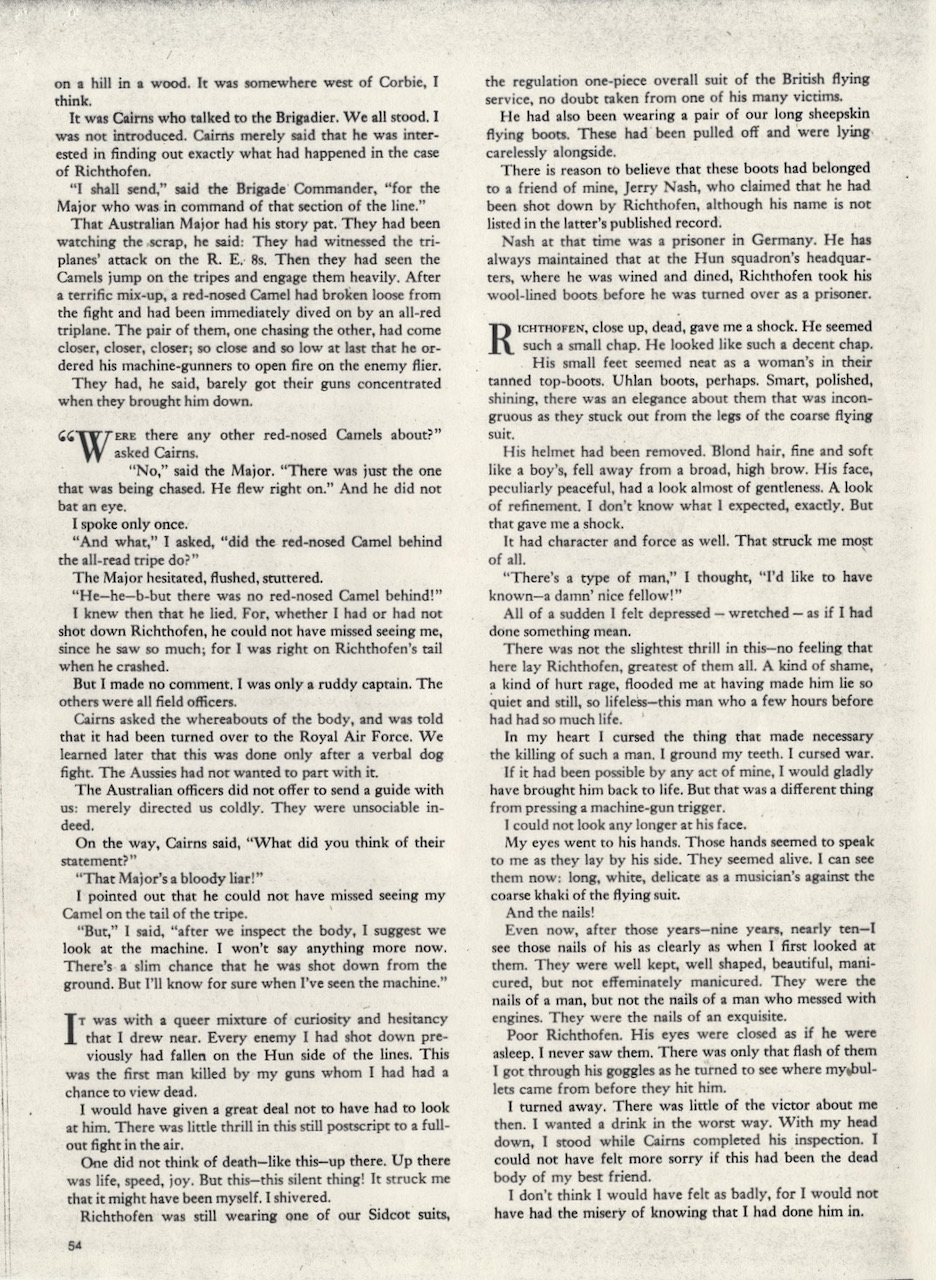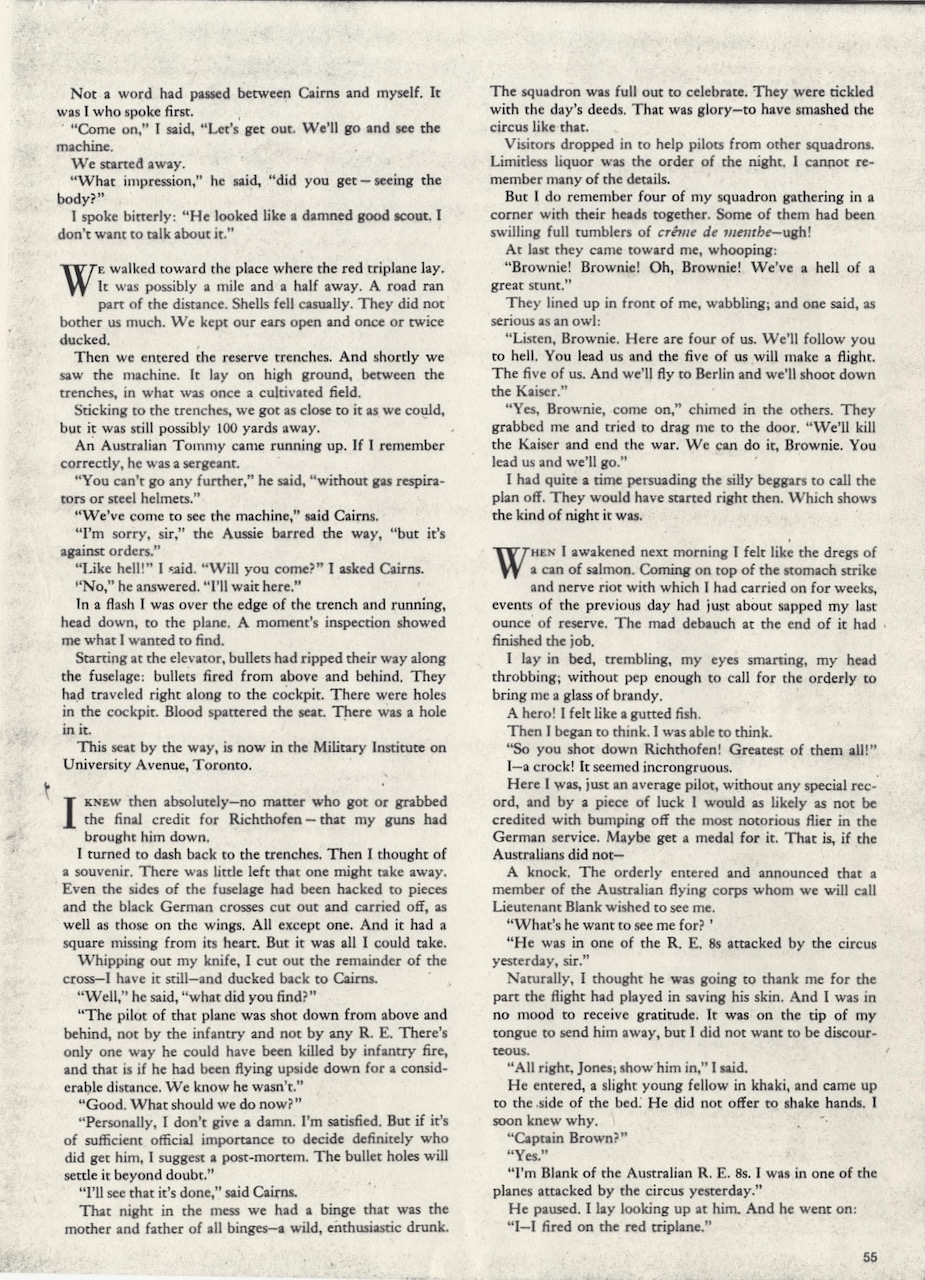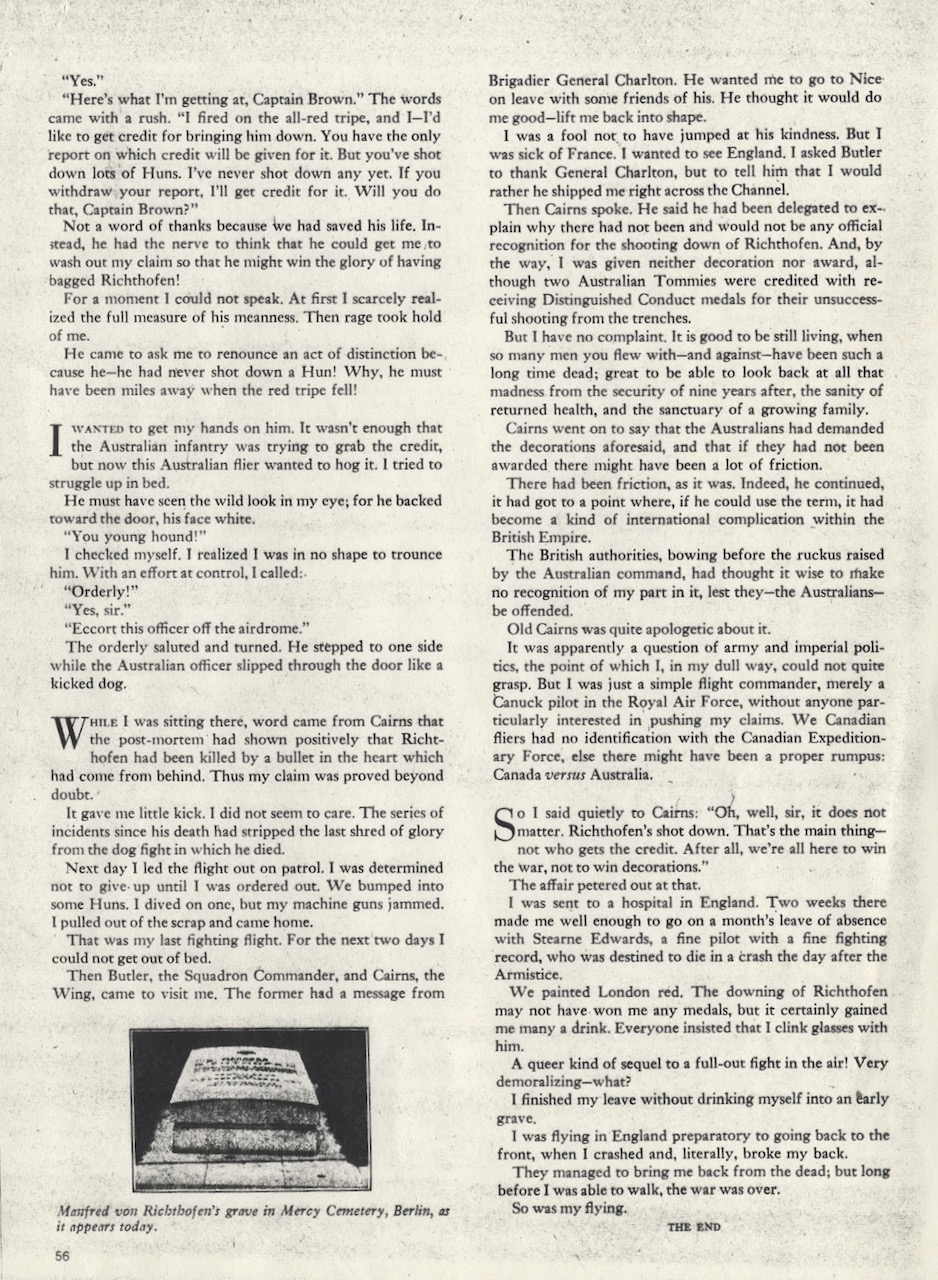A. Roy Brown
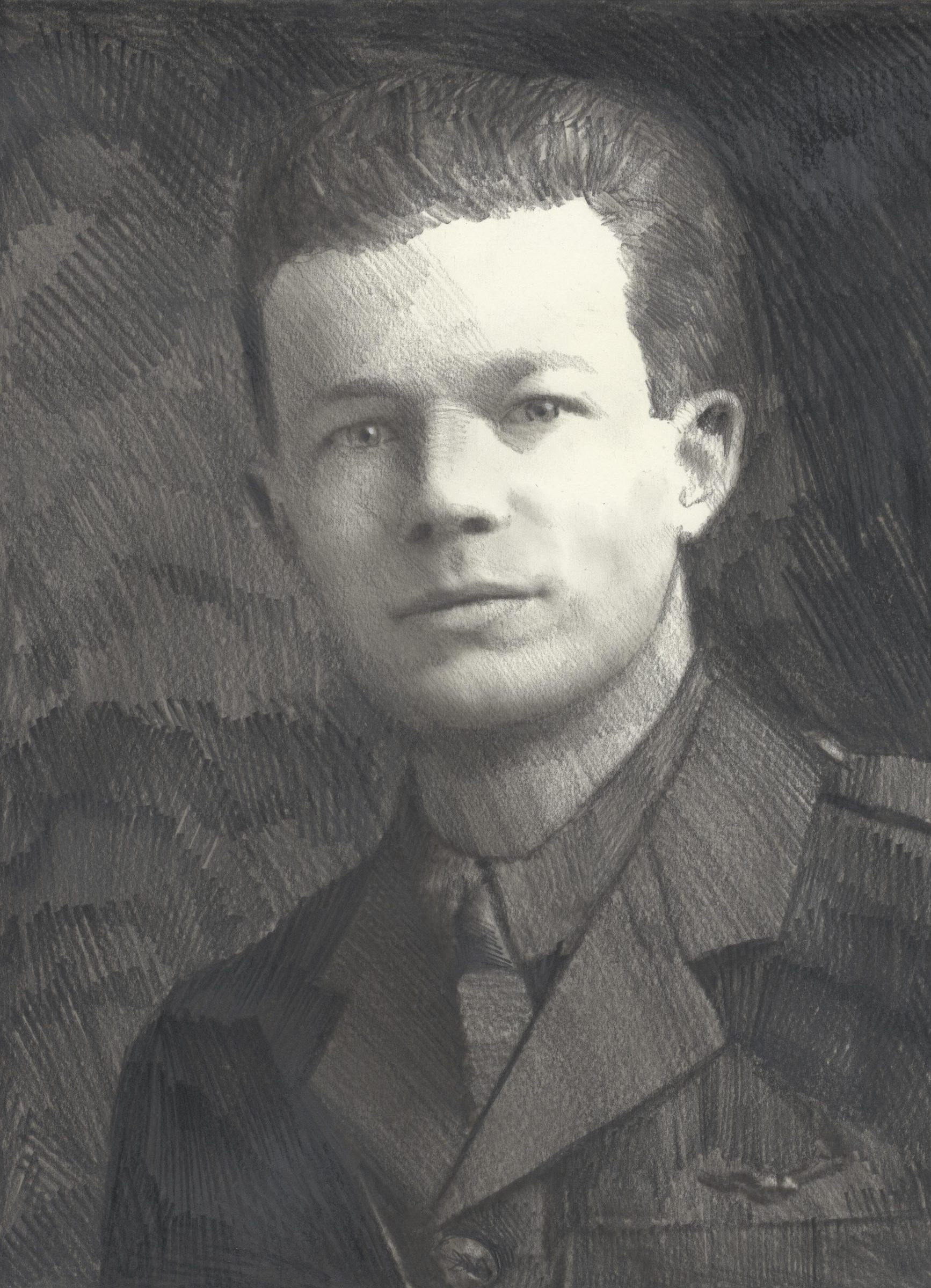
Birth Date: December 23, 1893
Birth Place: Carleton Place, Ontario
Death Date: March 9, 1944
Year Inducted: 2015
Awards: DSC*
Website: www.captroybrown.ca
A Royal Naval Air Service and Royal Air Force pilot and combat leader in the First World War, Roy Brown is inextricably linked to the demise of Manfred von Richthofen, Germany's highest scoring fighter pilot. Afterwards, Brown established General Airways Limited, operating through the 1930s in Ontario, Quebec and Manitoba.
Before Flying
Born in Carleton Place, Ontario on December 23, 1893, Arthur Roy Brown was known by his middle name, Roy. After attending school in Carleton Place, he studied accounting at the Willis School of Business in Ottawa from 1910-12. An invitation from an uncle, William Brown and his wife, Blanche, took Roy to Edmonton, Alberta, where he enrolled in Victoria High School from 1913-15. There he became friends with Wilfrid “Wop” May; the names of the two young men would soon be inseparably linked.
A Couple Bad Crashes
Returning home, Roy applied for enlistment in the First World War with the Royal Naval Air Service (RNAS). He was told that if he could earn a flying certificate, his tuition fees would be refunded and he could enlist in the RNAS as a Probationary Flight Sub-Lieutenant. Roy enrolled at the Wright School of Aviation at Dayton, Ohio, qualifying for his Aero Club of America Certificate on November 13, 1915 on his only solo flight, with only five hours and twenty minutes of flying time. On December 2 he sailed for England, where he began training at RNAS Station Chingford, twelve miles north of central London. While there he flew more advanced aircraft and on October 1915, Roy suffered minor injuries when his airplane crashed.
On April 6, 1916, the engine of his BE.2c aircraft at Chingford failed and he crashed again, breaking a vertebra. After recovery and resuming training, on September 6 he was given his RNAS Pilot Certificate and the rank of Probationary Flight Sub-Lieutenant and posted to Eastchurch Gunnery School. In January 1917 Roy was posted to Royal Navy Station Dover and on March 9 was assigned to active service.
On March 10 Brown was appointed to Number 9 Naval Squadron in France at the aerodrome near the village of Saint-Pol-Sur-Mer, near Dunkirk, flying patrols along the Belgian coast. After flying three missions in Nieuport aircraft he was given a Sopwith Pup, which he crashed when landing on March 16. He reinjured his back, as well as his left knee, and was sent to England for recovery. Returning to his station on May 10, he was given responsibility for maintenance of five aircraft and training of five pilots.
Victories and Promotions
On June 13, Roy was transferred to RNAS 4 Squadron at Bray Dunes, also near Dunkirk. When pilots flew at high altitudes, oxygen was scarce, temperatures were sub-zero Fahrenheit, lubricants on aircraft components congealed, guns frequently jammed and engine failures were not uncommon. Flying almost daily at high altitudes plus the mental strain of the work, was taking its toll on Roy’s health.
Following two more months of flying in which Roy was formation flying, testing new aircraft, doing photographic reconnaissance, patrol and escort flights, he scored his first victory on July 17. He downed a superior German aircraft, an Albatross III, while leading a flight of Sopwith Pups and was promptly promoted to Acting Flight Lieutenant. On August 24 he was recommended for further promotion and sent on leave, returning to 9 Naval on September 1. Two days later he scored his second victory, while flying a Sopwith Camel, an aircraft new to him. Assigned to command a flight, Roy shot down three more enemy aircraft in quick succession. Confidential Reports stated, “Performed his duties as Flight Leader with great skill and dash – most efficient officer with men, good control of men.” On September 6, Roy was recommended for the Distinguished Service Cross (DSC), awarded for the performance of meritorious or distinguished services before the enemy.
By October 13, 1917 Roy had scored his sixth victory. From November 10 until January 29, 1918 he returned to Canada on home leave. Back at 9 Naval in France, he was promoted to Acting Flight Commander, now flying only the Sopwith Camel biplane single-seater fighter. Escalation of the war saw Brown flying at least two combat missions a day, as well as training new pilots.
On March 13 he was recommended for promotion to Squadron Leader and soon scored his seventh victory. On April 1, 1918, the Royal Flying Corps and the Royal Naval Air Service amalgamated to form the Royal Air Force (RAF). Roy Brown’s rank changed from Flight Commander with the RNAS to Captain in the RAF. His squadron was renamed as 209 Squadron. On April 9, his high school friend, Wop May, was posted to the squadron and joined Brown’s A Flight. On April 11 and 12, Brown scored two more victories, bringing his total to nine.
The Fight with The Red Baron
On the morning of April 21, 1918, Brown’s squadron engaged with Baron Manfred von Richthofen’s “Flying Circus” German squadron of Fokker Triplanes. During the melée Wop May’s guns jammed, so he left the fight, heading for Allied lines, with the “Red Baron” giving chase. Seeing that May was in trouble, Roy Brown dove on von Richthofen, firing a burst at the red triplane and saving Wop May’s life. Von Richthofen’s airplane went down and Brown was recognized for downing the dreaded German fighter pilot, but never credited with the victory.
There is no doubt that Roy set in motion the events that resulted in the death of Germany's "Ace of Aces" and in so doing saved the life of "Wop" May - Roy did not fire the fatal round and nobody was given official credit for shooting down Richthofen.
After the War
Four days later, Brown was grounded and hospitalized with severe food poisoning and extreme exhaustion, then sent to England to recover. Soon afterwards, he was recommended to receive the DSC for the second time. Released from hospital on June 6, Brown reported for duty as an instructor with No. 2 School of Aerial Fighting and Gunnery in Yorkshire. On July 15 just after takeoff, his engine failed, the aircraft stalled and crashed. Seriously injured again, Roy spent eight months in hospital before being sent back to Canada on March 8, 1919 and was released from the RAF in April 1920 with the rank of Captain.
On February 19, he married Edythe Monypenny in Toronto, and by 1928 the couple had three children – Margaret, Barbara and Donald. Roy was employed with the Imperial Varnish and Color Company Limited of Toronto, partly-owned by his father-in-law, but maintained his interest in aviation.
General Airways
In March 1928 Roy incorporated General Airways Limited, with himself as president. In June the company began operation from Amos, Québec with two aircraft servicing remote mining companies in Québec and Ontario. By 1935 the company was operating four bases in Québec and one in Ontario. Seven aircraft were in service carrying freight and passengers to remote points as far as Flin Flon, Manitoba and providing scheduled service to Winnipeg.
With changing government policies, competition from other carriers and during the Depression, even though General Airways had enjoyed financial success, eventually it became unprofitable, and ceased operating in March 1940. Roy’s next venture was to purchase a run-down farm near Stouffville, Ontario, turning it into a profitable business. Still with an interest in aviation, he accepted an appointment as associate editor for Canadian Aviation magazine, a short-lived position because of his deteriorating health. On March 9, 1944, at the age of only 50, Arthur Roy Brown died at home.
News Stories
A. Roy Brown – 2015 Inductee
To return to the Inductee Page, please click here.

